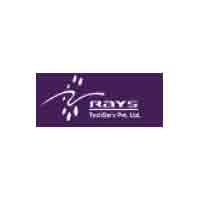
OVERVIEW
Cloud computing makes your most important software accessible from any computer or mobile device coming either from big worldwide companies such as Amazon, Google, Microsoft, IBM, etc., and from smaller but equally agile companies such as, GoGrid, Mosso, Enomaly, Bungee Labs Connect, LongJump, Coghead, and others.
DESCRIPTION
Cloud computing makes your most important software accessible from any computer or mobile device coming either from big worldwide companies such as Amazon, Google, Microsoft, IBM, etc., and from smaller but equally agile companies such as, GoGrid, Mosso, Enomaly, Bungee Labs Connect, LongJump, Coghead, and others.
The models that are currently used to offer Cloud Computing solutions, may be layered as:
Software as a Service(SaaS)
The capability provided to the consumer is to use the provider’s applications running on a cloud infrastructure. The applications are accessible from various client devices through a thin client interface such as a web browser (e.g., web-based email). The consumer does not manage or control the underlying cloud infrastructure including network, servers, operating systems, storage, or even individual application capabilities, with the possible exception of provider-defined user-specific application configuration settings
Platform as a Service(PaaS)
The capability provided to the consumer is to deploy onto the cloud infrastructure created by consumer or acquired applications created using programming languages and tools supported by the provider. The consumer does not manage or control the underlying cloud infrastructure including network, servers, operating systems, or storage, but has control over the deployed applications and possibly application hosting environment configurations
Infrastructure as a Service(IaaS)
The capability provided to the consumer is to provision processing, storage, networks, and other fundamental computing resources where the consumer is able to deploy and run arbitrary software, which can include operating systems and applications. The consumer does not manage or control the underlying cloud physical infrastructure but has control over operating systems, storage, deployed applications, and possibly limited control of select networking components
Private cloud
The cloud infrastructure is operated solely for an organization. It may be managed by the organization or a third party and may exist on premise or off premise
Community cloud
The cloud infrastructure is shared by several organizations and supports a specific community that has shared concerns (e.g., mission, security requirements, policy, and compliance considerations). It may be managed by the organizations or a third party and may exist on premise or off premise
Public cloud
The cloud infrastructure is made available to the general public or a large industry group and is owned by an organization selling cloud services
Hybrid cloud
The cloud infrastructure is a composition of two or more clouds (private, community, or public) that remain unique entities but are bound together by standardized or proprietary technology that enables data and application portability (e.g., cloud bursting for load balancing between clouds)
- http://raysindia.com

